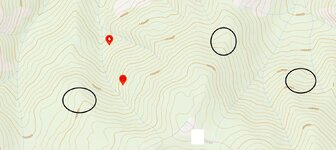wapitiwilly
FNG
I am new to Elk hunting but have been hunting deer for a long time. I have been practicing calling and have done some scouting, but plan on doing a lot more scouting this summer to narrow down units and specific areas to hunt.
I will be hunting the early archery season.
What type of terrain do folks focus on and why? Thinking of hiking ridges and creek bottoms and doing some calling. Depending on the area I choose to buy my tag, the terrain can vary from being pretty thick, to open areas that can be easily glassed.
What techniques do folks suggest for thick county? What about areas I can glass?
Any books folks recommend?
Any information on technique or terrain to focus on that will help me increase my odds is greatly appreciated.
I will be hunting the early archery season.
What type of terrain do folks focus on and why? Thinking of hiking ridges and creek bottoms and doing some calling. Depending on the area I choose to buy my tag, the terrain can vary from being pretty thick, to open areas that can be easily glassed.
What techniques do folks suggest for thick county? What about areas I can glass?
Any books folks recommend?
Any information on technique or terrain to focus on that will help me increase my odds is greatly appreciated.
Last edited:


